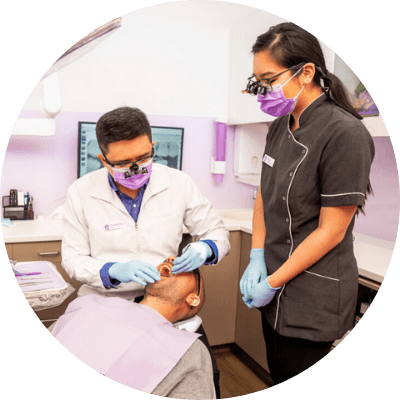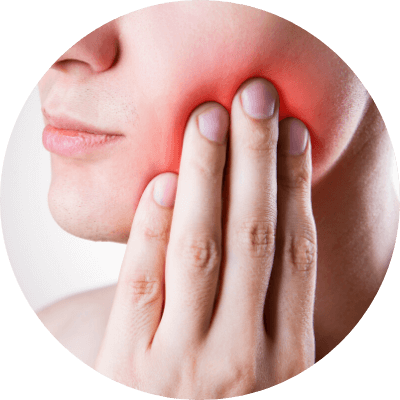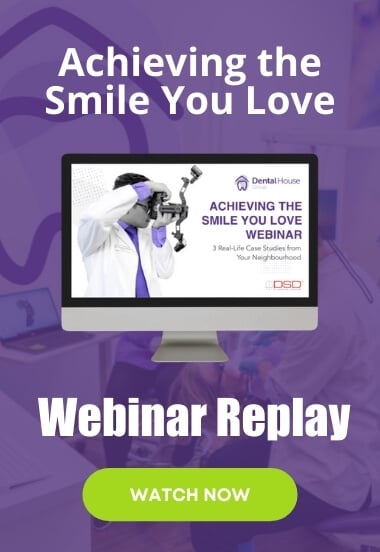Gum Disease Tales: Pigs, Dogs, Rats and Rabbits
Gum Disease Tales: Pigs, Dogs, Rats and Rabbits

In terms of new knowledge, periodontology greatly benefits from using animal models and their cell cultures. As do all the biological sciences.
Although cultured cells can be used to study the physiological processes of the pathogenesis of periodontitis, the complex host fundamentally responsible for the disease can’t be reproduced in vitro. So by the modern necessities of research and development, the likes of the animal kingdom’s rodents, rabbits, pigs, dogs and non-human primates, and with all the entailed advantages and disadvantages, are exploited in the modelling of human periodontitis.
Commonly (and rather cruelly, it must be mentioned) periodontitis is induced by the placement of a bacterial plaque-retentive tie or suture in the molar gingival sulcus – the area of potential space between a tooth and its surrounding gum tissue.
To research alveolar bone loss, various animals are injected with human oral bacteria, such as Porphyromonas gingivalis.
With the range of discoveries that animal models provide, it’s still difficult to determine how applicable or not, the findings are to this human disease, that’s estimated to affect more than one billion people worldwide.
Host response variability to that bacterial infection – and any other, essentially – significantly contributes to the manifestation of periodontal diseases.
What is yet to be developed is a practical, accurate and highly replicable archetype that mimics the natural pathogenesis of oral disease: a major health burden for many people throughout their lifetime. It causes pain, discomfort, disfigurement, depression, social isolation, malnutrition and even death.
The Global Burden of Disease Study 2019 estimated that oral diseases overall, affect 3.5 billion people globally.
That’s almost half the population of the planet.
Caries of permanent teeth is the most common of compromised oral health conditions with 2 billion adults suffering decay of their permanent teeth and 520 million children all over the world enduring the same.
Nothing to smile about there.
Periodontitis is a rampant and chronic immunoinflammatory disease resulting in the progressive loss of gingival tissue, periodontal ligament, and the supporting alveolar bone. It’s a condition associated with the onset or as a result of, the systemic disorders of diabetes, heart and respiratory disease, cancer and Alzheimer’s.
Part of the significant and hugely negative influence of poor oral health on the human condition, is the annual, aggregate population-based cost analysis of periodontal disease, approximated to bein excess of $US122.65 billion in America alone.
There is literally no individual equally susceptible to the destructive nature of periodontal infection. This personal susceptibility and variability means that human cell cultures can reproduce some, but certainly not all aspects of the periodontal disease process at the cellular level. It’s what makes animal research on host responses an acutely essential aspect of analysing periodontal disease in developing and improving treatment options.
Included in this, is the focus on personalised microbiome therapy, and the high value of understanding those genome and epigenome interactions.
Our closest primate cousins have similar oral structures and teeth, and also naturally occurring plaque, calculus, oral microbial pathogens and periodontal disease.

Rhesus and cynomolgus monkeys, as well as baboons are particularly susceptible to periodontal disease. In the name of research, the disease is accelerated via the mentioned injections, or plaque-accumulating ligatures – changed at one-to-two week intervals until the formation of gum pockets. Cynomolgus monkeys, with no previously detectible human pathogen P. gingivalis, were infected with the organism. Within six months, infection was confirmed and the formation of plaque leading to bone loss was observed.
Unsurprisingly, primate periodontitis most closely resembles the human expression of the disease. However the expense, husbandry requirements and vulnerability to tuberculosis limits the use of these sentient beings in research.
Lucky for them.
For miniature pigs, it’s much the same. In terms of anatomy, physiology, and disease development, miniature pigs have similar maxillofacial and oral structures to humans.
Which doesn’t seem to make sense. Except in the vernacular as a descriptive for a fiendish foe.
The Minnesota miniature pig was developed in the 1960s to aid medical research and were extensively used in biomedical research.
At 6 months of age minipigs usually develop gingivitis – the manifestation of inflamed, bleeding gingival tissue from accumulated plaque and calculus.
That the progression to severe periodontal inflammation is within ten months of that is identical to human histopathology and what makes minipigs suitable for periodontal, and orofacial studies. Curiously, minipigs carry expense and husbandry issues equalling the primates. Few studies fund their use, and then probably buy a 2kg certified organic pork leg for a hundred-and-twenty-five bucks.
Being “man’s best friend” doesn’t seem to count for much either, when you’re the experiment.
Dogs too, have naturally occurring gingivitis and periodontitis, via similar bacteria to humans. (So maybe don’t kiss your dog on the mouth.) The severity of the disease for them – as with humans – increases with age, with the frequent consequence of tooth loss. Oral disease susceptibility and resistance in different breeds is dictated by genetic variation rather than diet, which is applicable to humans.
Surgical manipulations, wound healing and periodontal pocket regeneration are also performed on our canine friends.
For a dog with periodontitis, the entire width of the marginal gingiva is affected – rather than just the lateral gingival pocket tissue. Not very humanlike and rather cruelly unfair to the canine. Care regulations of space, daily companionship, exercise and maintenance make dogs also less desirable for these types of studies.
Thank goodness for that.
But we’re not out of animals yet.
Although rodents have only one incisor and 3 molars in each quadrant, being the most financially viable animal model overrides almost everything else, so they’re used a lot. Particularly with genetically manipulated strains to enable focus on the individual components of host responses.
And for reasons known only to scientists and researchers, horses, rabbits, ferrets and hamsters also make the list for gum disease replication and experimentation.
It’s heartbreaking stuff.
All this pain and suffering because affordable dentistry with its six-monthly check-ups is not always easily available to the masses.
All this because medical care and its insurances have decided that the human body is entirely made of everything it is and contains, except for the mouth and teeth.
That veritable gateway to health, and the opening for disease.
Rather than ethically and economically studying this ubiquitous human disease while treating humans with gum disease, it’s better to torture and kill animals, spend billions of dollars and still have our teeth fall out.
The treatment of gum disease is the tail wagging the dog, in a shaggy-dog tale.
DISCLAIMER:
The content has been made available for informational and educational purposes only. New Gisborne Dental House does not make any representation or warranties with respect to the accuracy, applicability, fitness, or completeness of the content.
The content is not intended to be a substitute for professional personal diagnosis or treatment. Always seek the advice of your dentist or another qualified health provider with any questions you may have regarding a dental or medical condition. Never disregard professional advice or delay seeking it because of something you have read or seen on the Site.













